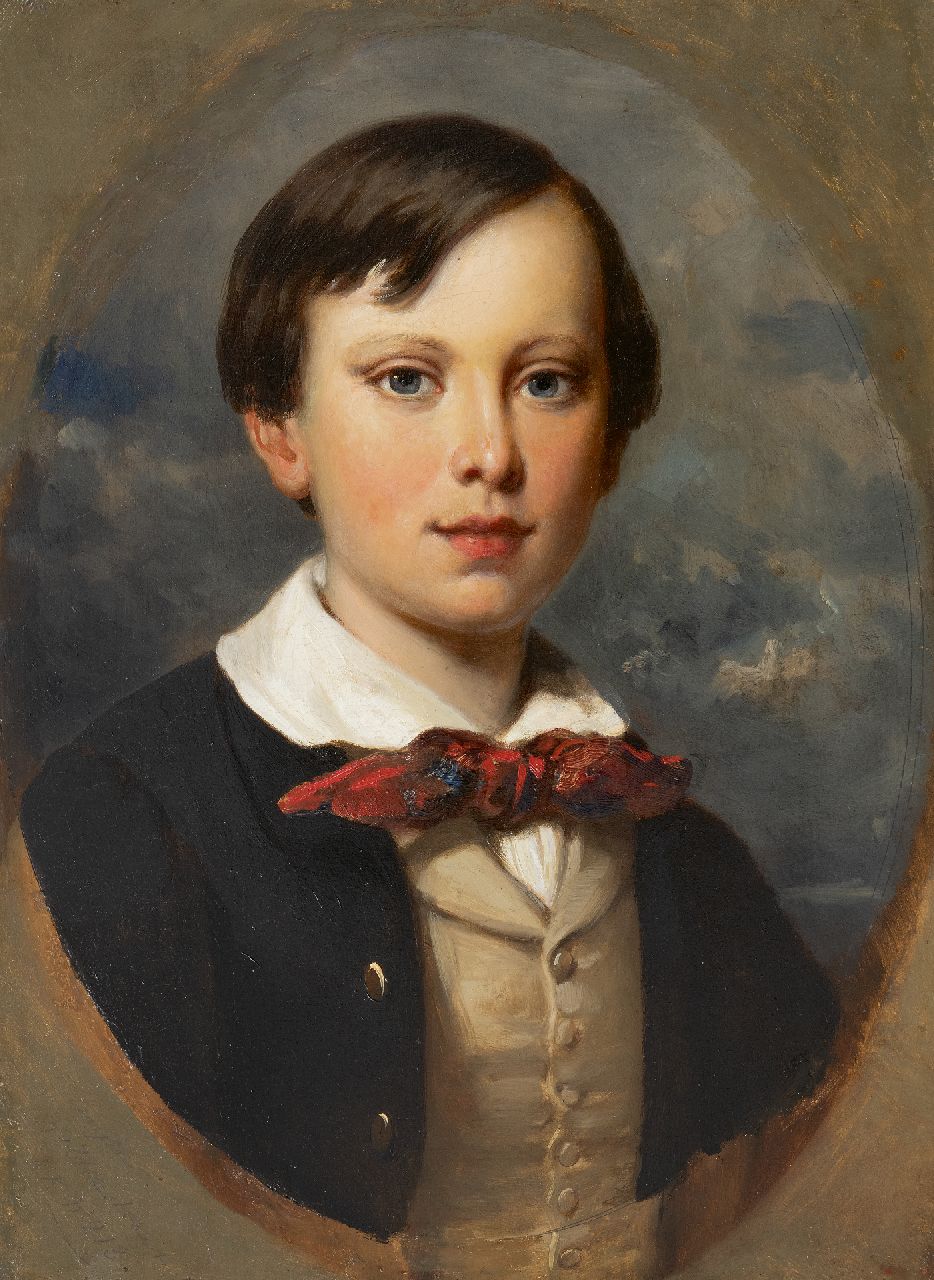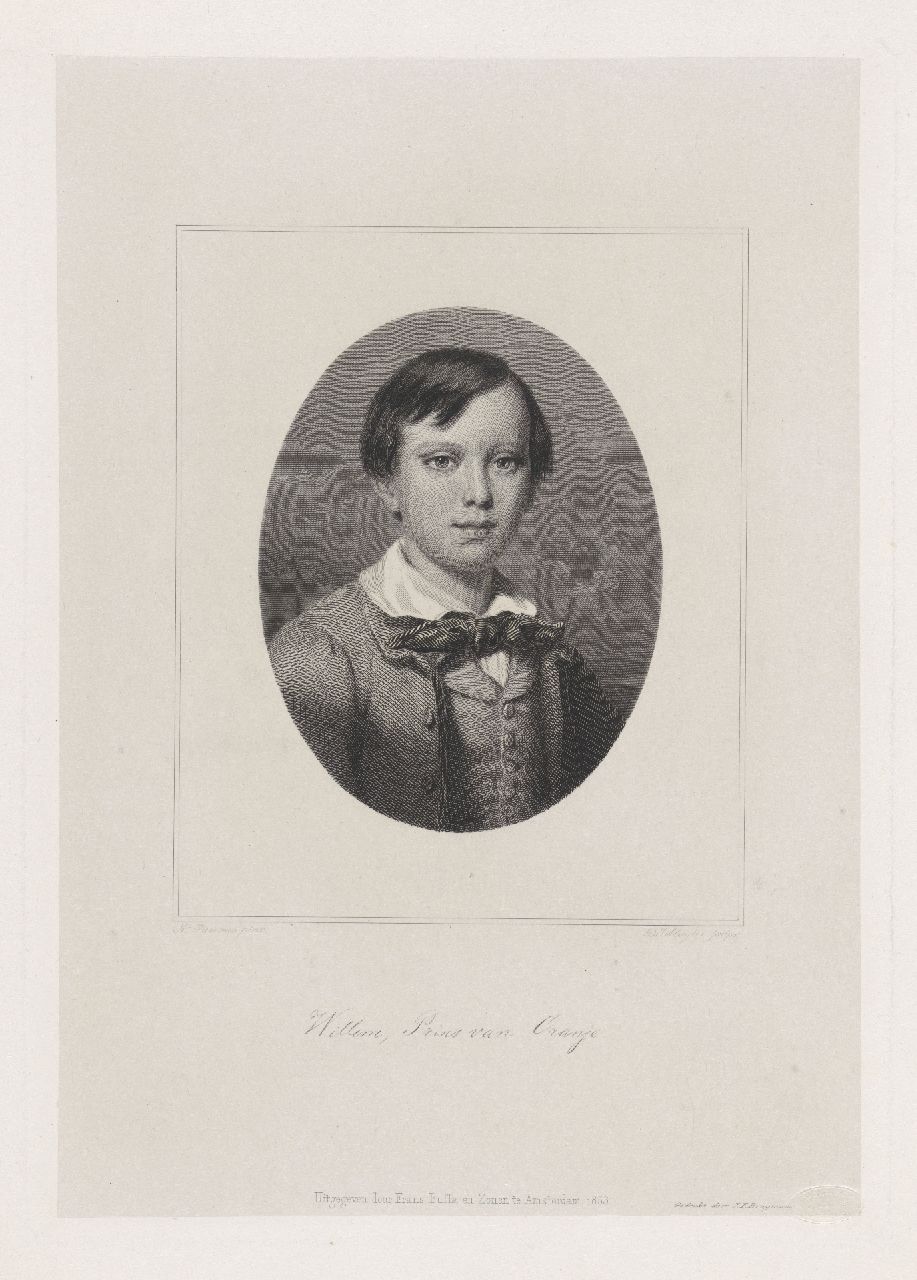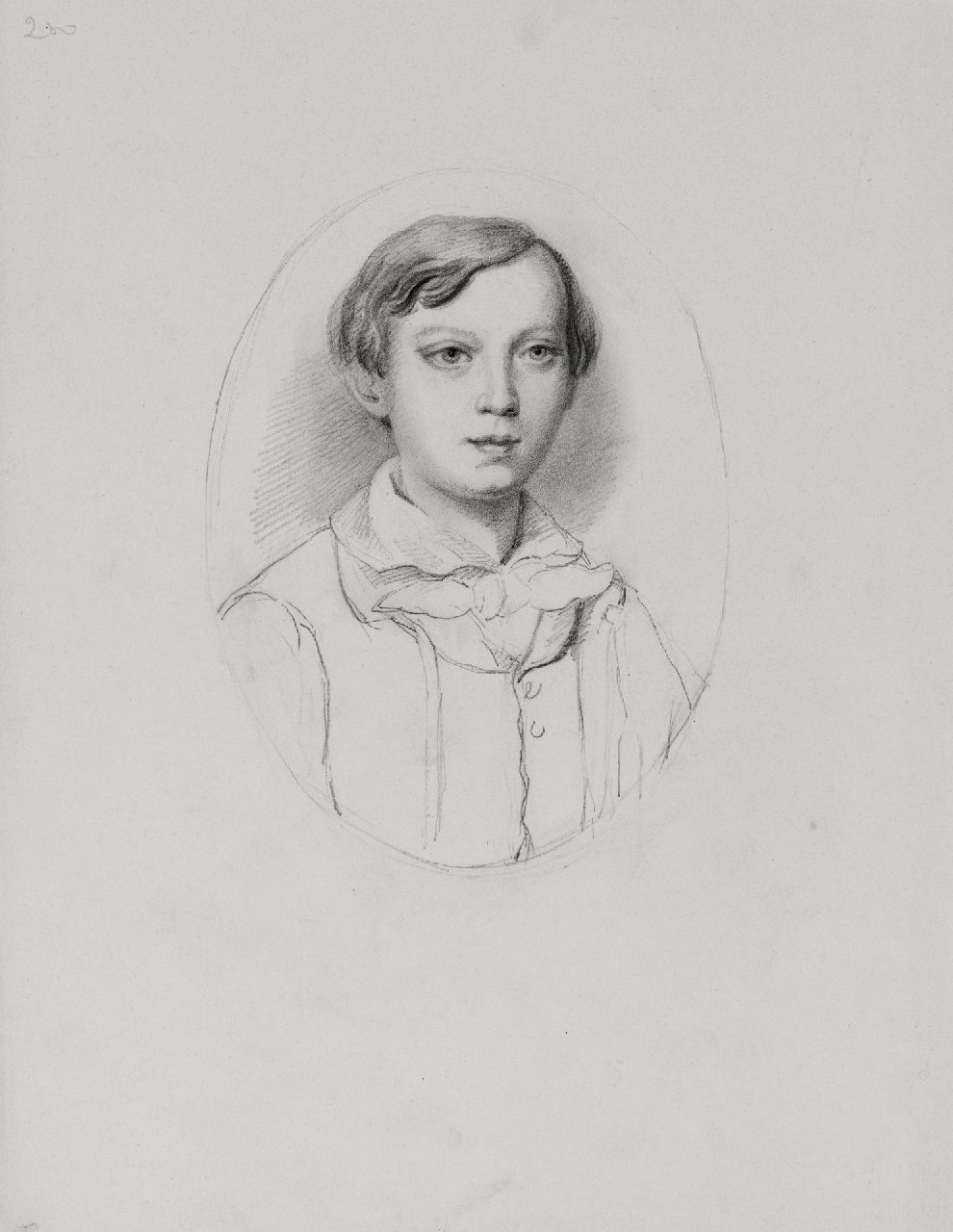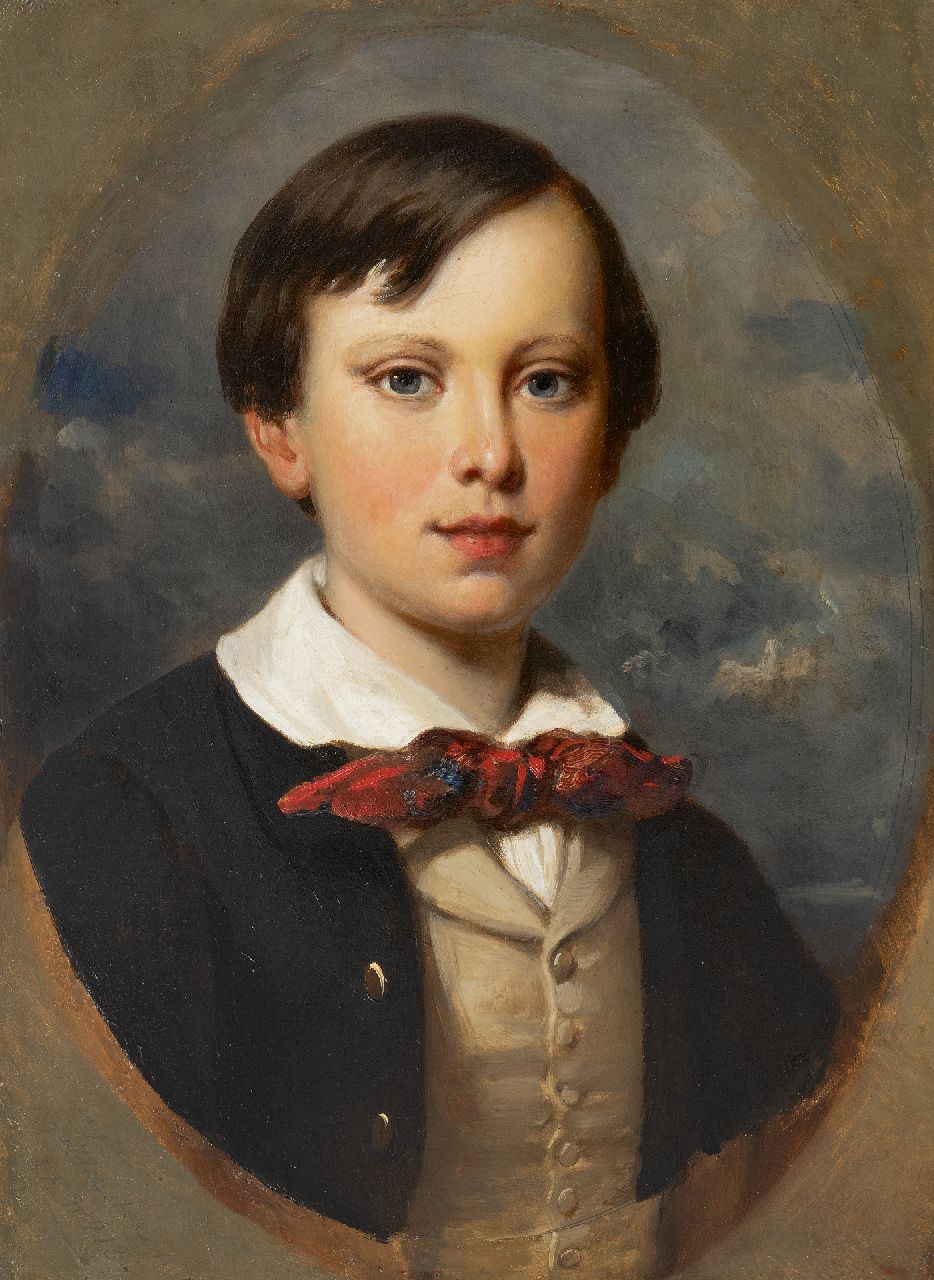Nicolaas Pieneman artwork • painting • previously for sale Portrait of the Dutch Crown Prince Wiwill
Nicolaas Pieneman
Amersfoort 1809-1860 Amsterdam
1809-1860
Portrait of the Dutch Crown Prince Wiwill
oil on panel 51.6 x 37.3 cm, painted ca. 1852-1853
This painting was previously for sale.
Wiwill (1840-1879) was the eldest son of King Willem III and Queen Sophie. He was thus crown prince and would succeed his father as King Willem IV. Due to his untimely death he never became king, his two brothers, Maurits and Alexander, did not survive their father either. After Sophie's death, Willem III marries Emma van Waldeck Pyrmont, 41 years younger, from whom the heir to the throne Wilhelmina is born, who was already called to the throne at the age of 10. Nicolaas Pieneman, friend of grandfather Willem II and court painter of the House of Orange painted numerous portraits of the royal family, including Wiwill as a 13-year-old boy. De Telegraaf, 25 October 2021 Unique painting tears Crown Prince from obscurity Excitement in Dutch art circles. Gallery owner Frank Buunk has discovered a painting by Wiwil, or Crown Prince Willem, the son of King Willem III. This notorious smuggler lived in self-imposed exile in Paris, where he died of pneumonia in 1879 at the age of 38. The special canvas, made by court painter Nicolaas Pieneman, dates from 1852 or 1853. 'We recently acquired the painting from a British collection', says Frank Buunk, who runs Buunk Kunsthandel in Ede with his wife Mariëtte Simonis Simonis. 'We did not know who the scene was and the painter was also unknown.' But thanks to the annotation that refers to the graphic artist Dirk Jurriaan Sluijter, experts were able to identify the person on the canvas. The Rijksmuseum has an etching of Wiwil made by him, which is known to be based on the painted portrait by Nicolaas Pieneman. And Royal Collections, the art collection of the Royal House, turned out to have the preliminary study. 'We don't know how the canvas ended up in England,' says the gallery owner. 'Via Wiwill or via the graphic artist Dirk Jurriaan Sluyter?' He thinks that King Willem-Alexander should buy it. Seems like a must for the royal family. Half brothers If Wiwil had not died and had become King Willem IV, Willem-Alexander would never have been king. After all, he descends from Queen Wilhelmina, who was called to the throne after the death of her half-brothers Willem and Alexander and of her father Willem III. Character Born in 1840, Wiwil grew up between his always quarreling parents, King William III and Queen Sophie, born Princess of Württemberg. Both pit their son against the other. This has undoubtedly been one of the reasons for his unruly nature. Boarding school The Prince of Orange went to a boarding school at the age of eleven in Veur, near Voorschoten; the Noorthey Institute of the teacher and pedagogue Petrus de Raadt. There were many noble boys on it. Invariably at the back of the class sat the man in charge of his intellectual education, his governor, Barn Eduard de Casembroot, who also watched him in the schoolyard and slept at both the institute and the palace near him. The young prince was intelligent, but due to laziness and mischievous behavior he only achieved mediocre results. Already at the age of fourteen he went to Leiden to study at the University for two years. After the divorce of his parents, the mother's child Wiwil, much against his will, was placed under the authority of his father. He didn't get along very well with the grumpy and hot-tempered Willem III, nicknamed 'King Gorilla'. Commander in chief In the meantime he was given military positions in the Netherlands, such as general of the infantry and lieutenant admiral. However, he threw the hat at it and left for Paris again. In 1870 Prince Willem was appointed commander-in-chief of the army in the field and made a mobilization plan in case the Netherlands became involved in the Franco-Prussian War. He resigned the same year, angry because his father did not know him in the decisions. After unsuccessful attempts to link him to the British Princess Alice and the Russian Tsar's daughter Maria Alexandrovna, the Prince of Orange set his sights on Mathilde Countess of Limburg Stirum. King Willem III, however, thought 'Mattie' was not enough. Wiwil then went sulking again to Paris, where money problems put him down and died in 1879 of neglected pneumonia.







